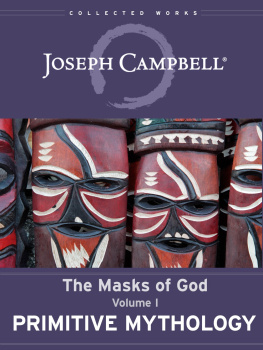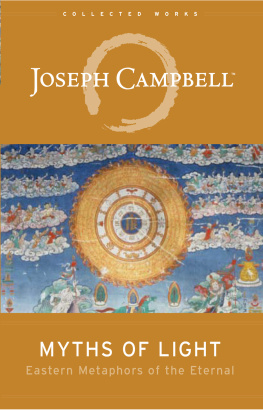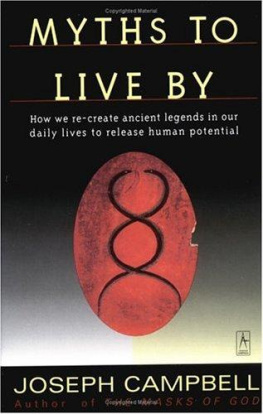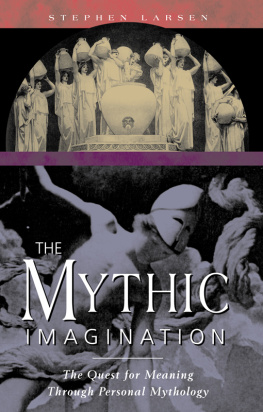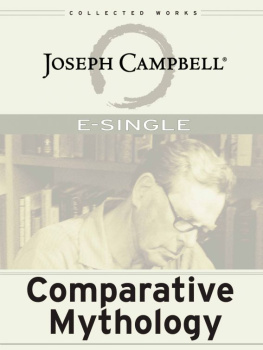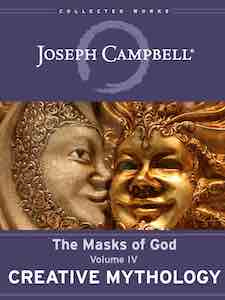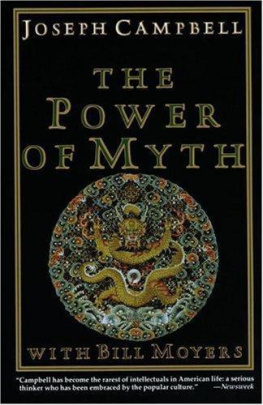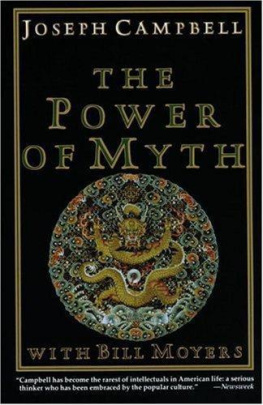Table of Contents
Landmarks
Foreword
On Completion of The Masks of God
Looking back today over the twelve delightful years that I spent on this richly rewarding enterprise, I find that its main result for me has been its confirmation of a thought I have long and faithfully entertained: of the unity of the race of man, not only in its biology but also in its spiritual history, which has everywhere unfolded in the manner of a single symphony, with its themes announced, developed, amplified and turned about, distorted, reasserted, and, , in a grand fortissimo of all sections sounding together, irresistibly advancing to some kind of mighty climax, out of which the next great movement will emerge. And I can see no reason why anyone should suppose that in the future the same motifs already heard will not be sounding still in new relationships indeed, but ever the same motifs. They are all given here, in these volumes, with many clues, besides, suggesting ways in which they might be put to use by reasonable men to reasonable ends or by poets to poetic ends or by madmen to nonsense and disaster. For, as in the words of James Joyce in Finnegans Wake: utterly impossible as are all these events they are probably as like those which may have taken place as any others which never took person at all are ever likely to be.
A Note on the 1969 Edition of Primitive Mythology
Hardly two years after the publication, 1959, of this first volume of The Masks of God, a series of sensational revelations from the Olduvai Gorge in Tanzania, East Africa, set back the date by more than a million years for the earliest known appearances of manlike species on this earth. Whereas the previous specimens, from half a dozen South African sites (see below, pp. 357-60), had been dated circa 600,000 b.c. , the Tanzania finds were in 1961 determined by the newly developed Argon-40 method to be approximately 1,750,000 years old.
A second highly significant though very different field of research in which discoveries relevant to the argument of this volume were announced almost immediately after its publication was that of the archaeology of the nuclear Near East, where a series of disclosures from the Anatolian plain of Southern Turkey revealed an unsuspected period of beginnings, antecedent to the earliest evidences of the known neolithic cultures. As a consequence: I. The proto-neolithic has been carried back two thousand years, to circa 12,500 b.c. , and II. The basal neolithic now appears to have first arisen neither in Iraq, Iran, Palestine, nor Syria, but in Asia Minor, circa 7,500 b.c. , and to have developed there in three stages:*
* During Campbells lifetime the date of the first permanent settlements and thus the earliest true civilizations was pushed back considerably; see Joseph Campbell, Goddesses: Mysteries of the Feminine Divine, Safron Rossi, editor (Novato, California: New World Library, 2013), which was based on his late lectures. Scientists and historians currently place the earliest stage of the Neolithic Age between 12,500 and 7000 b.c. The basal neolithic is currently believed to have lasted from 7500 b.c. to 3500 b.c. Editors
A formerly unsuspected stage, known now as the pre-pottery or aceramic neolithic, which has been identified in Palestine (at Jericho) as well as at Hacilar, atal Hyk, and certain other Anatolian sites. The apparent luxury of the settlements, with their tidy little brick houses and the sense throughout of a manner of life already well established, suggests that the arts of agriculture and stock breeding must already have been mastered, though still supplemented by the hunt. And of the greatest interest, furthermore, both at Hacilar and at Jericho, is the evidence of a domestic skull cult of some kind (compare below, p. 127).
Then at atal Hyk, circa 6500 b.c. , ceramic wares suddenly appear, and, as the excavator, Dr. James Mellaart, observes: we can actually study the transition from an aceramic Neolithic with baskets and wooden vessels to a ceramic Neolithic with the first pottery. Along with this pottery, furthermore, which is the earliest yet discovered anywhere, there have also come to light the earliest known neolithic figurines, in association with some forty or more symbolically ornamented chapels revealing, in superb display, practically all the basic motifs of the great mother-goddess mythologies of later ages. And these earliest known Neolithic figurines are of an easy, natural, lifelike grace, not the least archaic, primitive, or stilted.
It is only in the next and final stage of the early Anatolian development, and then gradually also in neighboring areas circa 7000-3500 b.c. that those well-known, unlifelike, conventionalized naked-goddess figurines appear that have been generally associated with the earliest village arts. A trend from naturalism to abstraction, from visual to conceptual thought, would seem thus to be indicated. And in the Anatolian sphere, meanwhile, which is still in advance of all, signs have begun appearing of the dawn of the earliest age of metals, the early chalcolithic: beads and little tubes of copper and lead, various trinkets, and even a few metal tools. A truly superb painted pottery is also being manufactured, pointing toward the great ceramic styles of the following millennium (Halaf wares, Samarra wares, Obeid wares, etc., as discussed in the body of my text). The expansion southward and eastward of the arts and manners of settled village life now has begun to cover the whole of the Near East, new centers of creative transformation are developing, and as reviewed below the stage has been set for the rise in Mesopotamia, circa 5000 b.c. , of the first of the great historic civilizations.
A third area of archaeological research and the last that I shall mention here where a startling discovery transformed the situation almost immediately after the publication of this book, was the coast of Ecuador, where, in December 1960, a piece of Japanese pottery was picked up on a beach. Subsequent excavations yielded many fragments more, all of the early Jomon (cord-marked) style of circa 3000 b.c. which is the earliest date for pottery yet registered for the New World. A number of ceramic female figurines turned up, also, in these digs, and these are the earliest figurines indeed the earliest works of art yet unearthed in the Americas.
Now all three of the fields of research into mans past of which I have here taken note are today in such rapid and promising transformation that there will, no doubt, be as many astonishing disclosures during the seventies and eighties as there were in the decade of the sixties. In the main (I suspect) they will support, as have these, the arguments of my pages: but if not, the reader (I dare to hope) will know how to add and subtract.
Joseph Campbell
New York City
Christmas Day, 1968
EDITORS FOREWORD
to the Collected Works of Joseph Campbell Edition
More than any of Joseph Campbells books, Primitive Mythology has felt the whips and scorns of time. Throughout the decades since the book's original 1959 publication, the science on which dates and theories were based has been surpassed by new discoveries and new hypotheses. The book itself remains important and vibrant, but it has become less useful as a reference.
The primary mission of Joseph Campbell Foundation (JCF.org) is to preserve, protect, and perpetuate the work of Joseph Campbell, and so we began, some years ago, to look at ways that we could bring this first volume of Campbells Masks of God series into accord with current scientific theory.
A pair of anthropologists, Sydney Yeager and Andrew Gurevich, undertook to identify those passages where this book needed to be updated, and to give us some sense of the current scientific consensus in each case, as well as to point us toward sources for that consensus. Following their excellent work, we have attempted to fold 2018 science into a 1959 book as seamlessly as possible.

